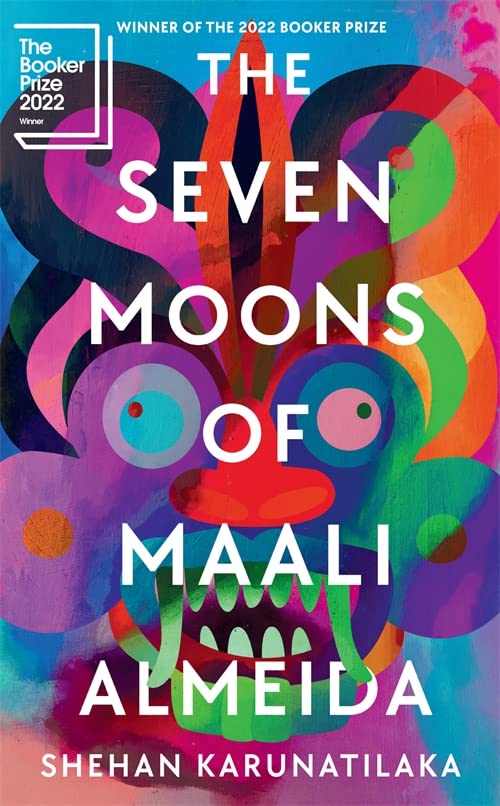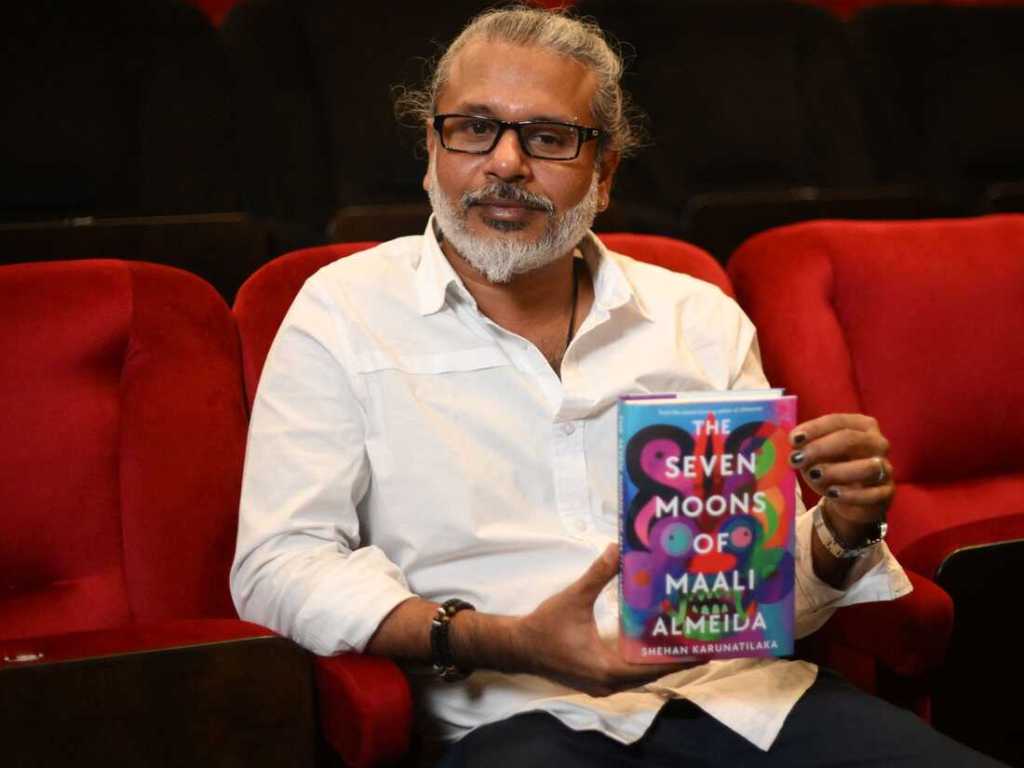
Colombo, 1990. Maali Almeida, war photographer, gambler and closet gay, has woken up dead in what seems like a celestial visa office. His dismembered body is sinking in the serene Beira lake and he has no idea who killed him. At a time where scores are settled by death squads, suicide bombers and hired goons, the list of suspects is depressingly long, as the ghouls and ghosts with grudges who cluster round can attest.
But even in the afterlife, time is running out for Maali. He has seven moons to try and contact the man and woman he loves most and lead them to a hidden cache of photos that will rock Sri Lanka.
Ten years after his prizewinning novel Chinaman established him as one of Sri Lanka’s foremost authors, Karunatilaka is back with a rip-roaring epic, full of mordant wit and disturbing truths.
A kaleidoscopic performance: a colourful, dizzying and disorientating exploration of the turmoil in Sri Lanka in the 1980s and 1990s, and our host for this exploration is the recently deceased Maali Almeida, “Photographer. Gambler. Slut.”
What I Liked
- The use of the narrative stance – using the second person “you” is a challenging choice, but it felt that it worked here, it was not just a gimmick
- Maali Almeida who, despite his many and obvious flaws, was a deeply likeable and engaging character
- The humour that ran through the novel, alongside the depravity, violence and despair
What Could Have Been Different
- The structure of the novel felt (deliberately, of course) episodic and fragmented which didn’t work that well for me
Maali Almeida was dead; to begin with…
No, wrong novel. Albeit, an accurate sentence. Maali Almeida, our protagonist in this novel, is introduced to us having died before the novel began: he thinks he has awoken into a strange drug induced hallucinatory dream as a long sequence of counters and queues and arguments with officials ensues
Behind you, a queue weaves around pillars and snakes along the walls. The air is foggy, though no one appears to be exhaling smoke or carbon dioxide. It looks like a car park with no cars, or a market space with nothing to sell.
This, however, is no hallucination but genuinely the after life inhabited by ghosts and lost spirits, bureaucracy and paperwork: “The afterlife is a tax office and everyone wants their rebate.” In this opening scene we see a bravura example of Karunatilaka’s strengths in this novel – his sense of absurdity and his control of dialogue. There is a delicious comedy on some of the squabbles between the dead that pepper the novel.
But there is a serious undertone: Almeida discovers that he has seven moons – seven nights – before his chance to enter “the light” expires and he chooses to use those seven nights to investigate his own death, discover his killer and use the explosive photographs that he had secreted under his bed to expose the corruption and violence that the country’s regime is committing. Almeida’s quest, however, is only a part of Karunatilaka’s narrative as he explores that vice and corruption.
And the Sri Lanka he depicts is deeply mired in vice and violence, tribal and sectarian atrocities and hatreds, governmental corruption and complicity. He helpfully enumerates the various factions – the LTTE, JVP, UNP, STF as well as international involvement from agencies, the media and the UN. He concludes, cycnically, with
It’s not that complicated, my friend. Don’t try and look for the good guys ’cause there ain’t none. Everyone is proud and greedy and no one can resolve things without money changing hands or fists being raised.

Within this world, Maali has bright points in his personal life: his best friend Jaki and his lover DD with both of whom his relationship is difficult. And it is to them that he turns – insofar as a disembodied spirit can turn.
Karunatilaka invests in the mechanics of the spirit world, as well as in the bureaucracy of it, and Maali asks
“Can I go wherever the wind blows?”
“Not really, hamu. You can travel wherever your body has been.”
“That’s all?”
“You can go where your name is spoken. But you can’t fly to Paris or the Maldives. Unless your corpse is taken there.”
“Why the Maldives?”
“Ghosts mistake that place for paradise. There are more spirits than stingrays in those shallows.”
“But you can ride winds?”
“Like public transport for dead people, sir. I will show.”
The effect of this is to make the structure of the novel rather episodic: we eavesdrop on a phonecall here, a cabinet meeting there, friends demanding that the police investigate properly and the police officers’ half-hearted attempts. I found this lack of agency rather unsettling as a reader – a frustration shared by Maali himself perhaps as he desperately seeks to whisper into the ears of the living and to slip into their dreams.
And of the living characters, the only two that were fleshed out – pardon the pun – were Jaki and DD, and of the two Jaki felt more real. And the moment that Jaki, a news reporter on state sponsored television, delivers the true new live on air when Maali’s body is discovered – for which she was sacked on the spot and eventually abducted by the regime – was fantastic and courageous.
As this did win this year’s Booker Prize, a list of books I have been slowly working my way through, it does raise the question of whether I think it deserved that win. It is certainly a worthy book, shining a light on atrocities and politics that I for one vaguely recall from my youth in the 1980s – I’m not sure I ever understood what Tamil Tigers were when they were mentioned on the news back then… And there is a certain whimsy (if whimsy be the right word) in a novel set in the afterlife and narrated by a dead character. There are aspects that recall Salman Rushdie and George Saunders’ Lincoln in the Bardo… but for me I don’t agree with the Booker Prize judges. This novel was rather bleak and passive and lacked the brutal white-hot anger of The Trees which I would rate a shade higher; and how anyone is meant to compare and judge those novels against the mythic scope of Alan Garner’s Treacle Walker, I have no idea but that latter book was by far my personal favourite.







Wonderful review. I like that’s its told in the afterlife.
LikeLiked by 1 person